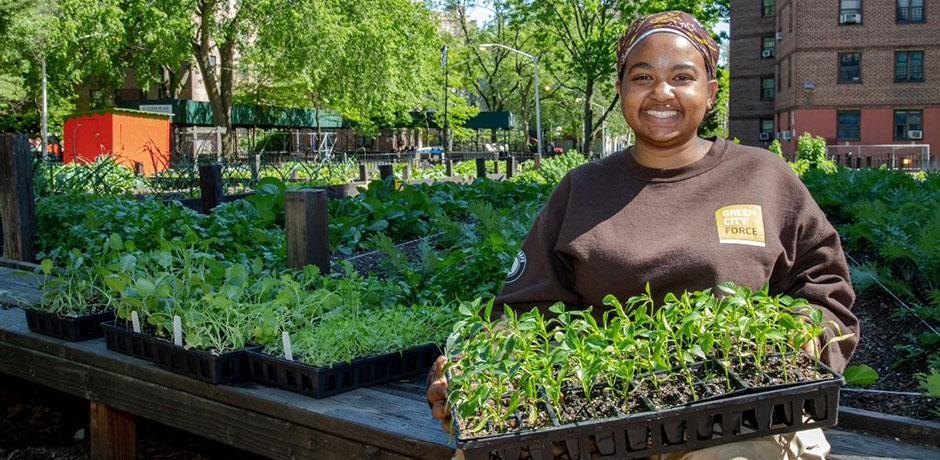What Does City Blooming Do?
What Does City Blooming Do?
Blog Article
The Best Guide To City Blooming
Table of ContentsNot known Factual Statements About City Blooming City Blooming Fundamentals ExplainedGetting My City Blooming To WorkThe Single Strategy To Use For City BloomingGetting My City Blooming To Work
Fascinated in growing food for sale in the City of Chicago? Assuming regarding starting an area yard? Changes to the Chicago Zoning Ordinance permit agricultural uses like neighborhood yards and metropolitan ranches in numerous components of the city. Below is a listing of often asked questions pertaining to the guidelines and regulations that farmers need to think about when planning a city agriculture task.
The zoning amendment does not customize any kind of other codes managing composting, structure authorizations, buying or renting City owned home, business licenses or ecological contamination. There are existing codes that manage these problems and they continue to be in full impact and might be applicable to your job. Area gardens are normally owned or handled by public entities, public organizations or community-based companies and maintained by volunteers.
Urban ranches expand food that is meant to be offered, either on a not-for-profit or for-profit basis. Due to their commercial objective, urban ranches require a service permit.
City Blooming Can Be Fun For Anyone
Composting is permitted yet just for plant material that is generated and made use of on website. The quantity of compost material can not go beyond 25 cubic lawns at any provided time according to the requirements in 7-28-715 of the City's Municipal Code. Yes. Since the soil at many brand-new yard sites requires changing, garden compost, dirt, wood chips, or other products can be obtained to build or enhance the expanding area - urban gardening.

If a structure authorization is needed then the hoophouse will certainly be thought about an accessory building. You can figure out even more concerning the building authorization demands by calling the Division of Structures. The 25,000-square-foot size restriction is meant to avoid a solitary area garden from controling a given block or interfering with the block's existing domestic or business character.
The limitation does not use to gardens found in Public Open Room (POS) areas. Can there be even more than one community garden that is 25,000 square feet on a single block? Fence is not needed, however, gardens that have large car parking locations might be required to set up fencing or other landscape design attributes.
Fascination About City Blooming
B1 & B2 additional hints areas call for that all commercial usage tasks be conducted indoors. R districts restrict business task. The laws mirror the objective and intent of the Zoning Code. Is fence required for urban ranches? Yes. Fences might be needed, in addition to landscape design and screening, for specific parking lot and outdoor job or storage space locations depending upon area and the particular activity occurring.
Yes. Urban ranches call for structure licenses and zoning approvals prior to construction. Other forms of city review might be needed relying on particular frameworks, tasks, size, landscape design, licensing, public heath and stormwater management problems. Most of these demands are identified in the job style or permitting procedure, nonetheless, the applicant may be responsible to individually determine specific licenses or permits that might be needed.
Yes. The type of certificate is determined by what is happening at the website. The Division of Company Affairs and Customer Defense can assist determine the details sort of organization permit that's called for. Yes. Off street parking is needed for most industrial tasks in Chicago. The required number of garage is based on the variety of employees dealing with website and not the square footage of the expanding room.
All About City Blooming

Yes. A city farm can market garden compost product created on website, however, the operation needs to adhere to the policies in 7-28-715 of the Chicago Municipal Code. Yes. Aquaponic systems are enabled inside your home on metropolitan ranches in several zoning districts. Nevertheless, a zoning evaluation and structure authorization is called for in order to install structures or systems and a service license is required as defined over.
Approximately 5 hives or swarms of honey may be kept as an accessory use. Beekeepers have to sign up with the Illinois Division of Farming. For additional information regarding the suggested zoning change you may get in touch with the Department of Housing and Economic Advancement, Bureau of Preparation and Zoning at 312.744.8563.
, which takes location in rural areas at the edge of residential areas.
Things about City Blooming
It can include an activity of natural farmers, "foodies" and "locavores", who seek to form socials media started on a common principles of nature and area holism. These networks can establish using official institutional support, ending up being integrated into neighborhood town planning as a "transition community" activity for sustainable metropolitan advancement.
In either situation, the more direct access to fresh veggie, fruit, and meat items that might be realised through metropolitan farming can enhance food protection and food safety while lowering food miles, bring about lower greenhouse gas discharges, therefore adding to climate adjustment reduction. Some of the initial proof of metropolitan farming originates from Mesopotamia.
Report this page